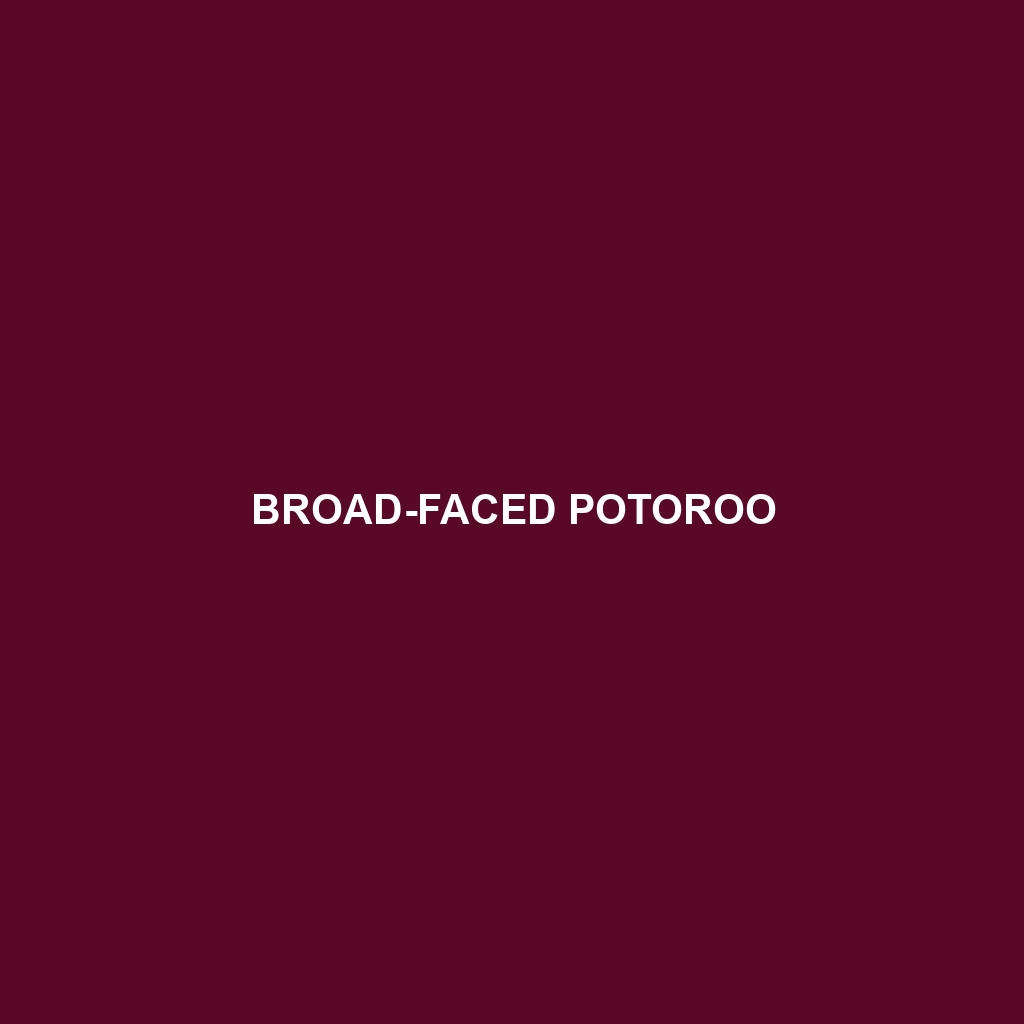Absolutely! Here is a detailed description for the Broad-faced Potoroo:
Broad-faced Potoroo (Potorous platyops)
The Broad-faced Potoroo, scientifically known as Potorous platyops, was a small marsupial native to Australia. This elusive and enigmatic creature was last recorded in the 19th century and is now considered extinct. Despite its extinction, the Broad-faced Potoroo remains a subject of interest due to its unique attributes and the role it played in its ecosystem.
Physical Characteristics
Size: The Broad-faced Potoroo measured about 30 to 38 centimeters in body length, with an additional tail length of approximately 15 to 20 centimeters. It weighed between 300 to 900 grams, making it a small marsupial.
Coloration: This potoroo species exhibited a distinctive fur coloration. Its coat was generally greyish-brown, with a paler underbelly. The fur was dense and soft, providing camouflage and protection.
Special Features: True to its name, the Broad-faced Potoroo had a notably wide and flat face, setting it apart from other potoroo species. Its facial structure included large, round eyes and short, rounded ears.
Behaviors
Social Interactions: The Broad-faced Potoroo was believed to be a relatively solitary animal, although it may have formed loose groupings or pairs, especially during the breeding season.
Feeding Habits: This nocturnal forager primarily fed on a diet of fungi, roots, tubers, and other plant material. Its strong forelimbs and claws were well-adapted for digging up food from the ground.
Ecological Roles: As a forager of fungi and plant matter, the Broad-faced Potoroo played a vital role in soil aeration and seed dispersal, aiding in the maintenance of its native ecosystem.
Habitats
The Broad-faced Potoroo inhabited the scrublands, grasslands, and open forests of southern Australia. It favored areas with dense ground cover where it could find ample food sources and shelter from predators.
Adaptations
Nocturnal Lifestyle: To avoid the heat of the day and predators, the Broad-faced Potoroo was primarily active at night.
Digging Ability: Its strong forelimbs and claws were perfect for unearthing food, making it an efficient forager in its environment.
Camouflage: The greyish-brown fur provided excellent camouflage against the forest floor and scrubland, helping it stay hidden from predators.
Conservation Status
Unfortunately, the Broad-faced Potoroo is classified as extinct. The last confirmed sighting was in the 1870s. Factors contributing to its extinction likely included habitat destruction, predation by introduced species such as cats and foxes, and competition with other animals for food and shelter.
Fascinating Fun Facts
Historical Mystique: The Broad-faced Potoroo was elusive even before its extinction, with few specimens ever collected or observed, adding an air of mystery to its existence.
Scientific Rarity: Due to its rarity, much of what is known about the Broad-faced Potoroo comes from limited historical records and a handful of museum specimens.
Ecological Impact: Despite its extinction, studying the Broad-faced Potoroo can provide valuable insights into the ecological dynamics of its former habitats and the impacts of human activities on native wildlife.
This comprehensive description captures the essence and significance of the Broad-faced Potoroo, making it a fascinating subject for your website’s visitors.
